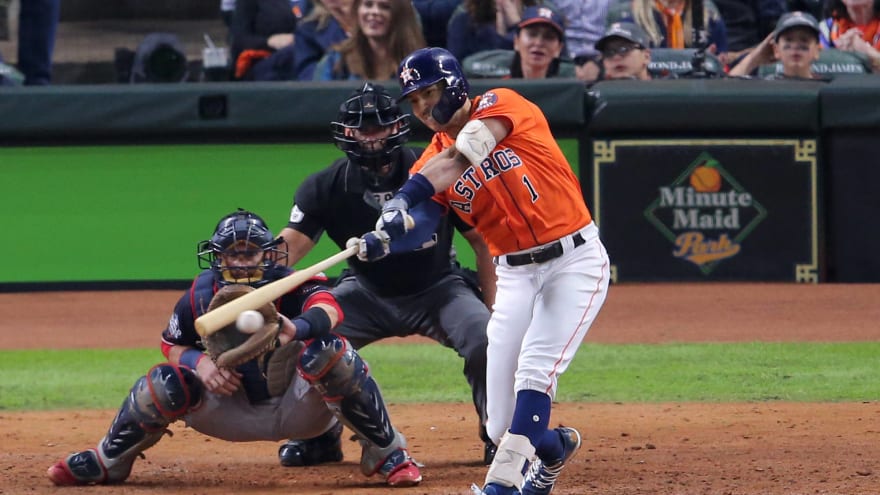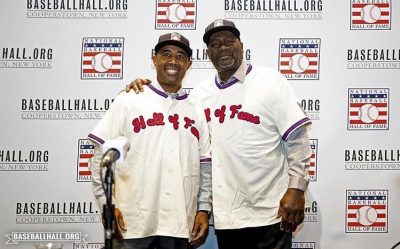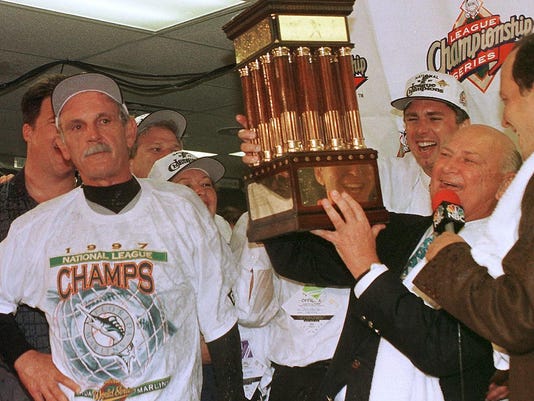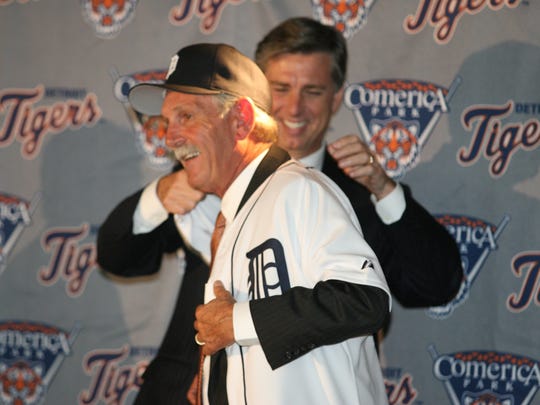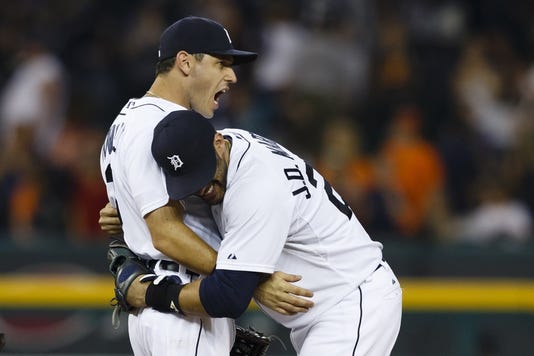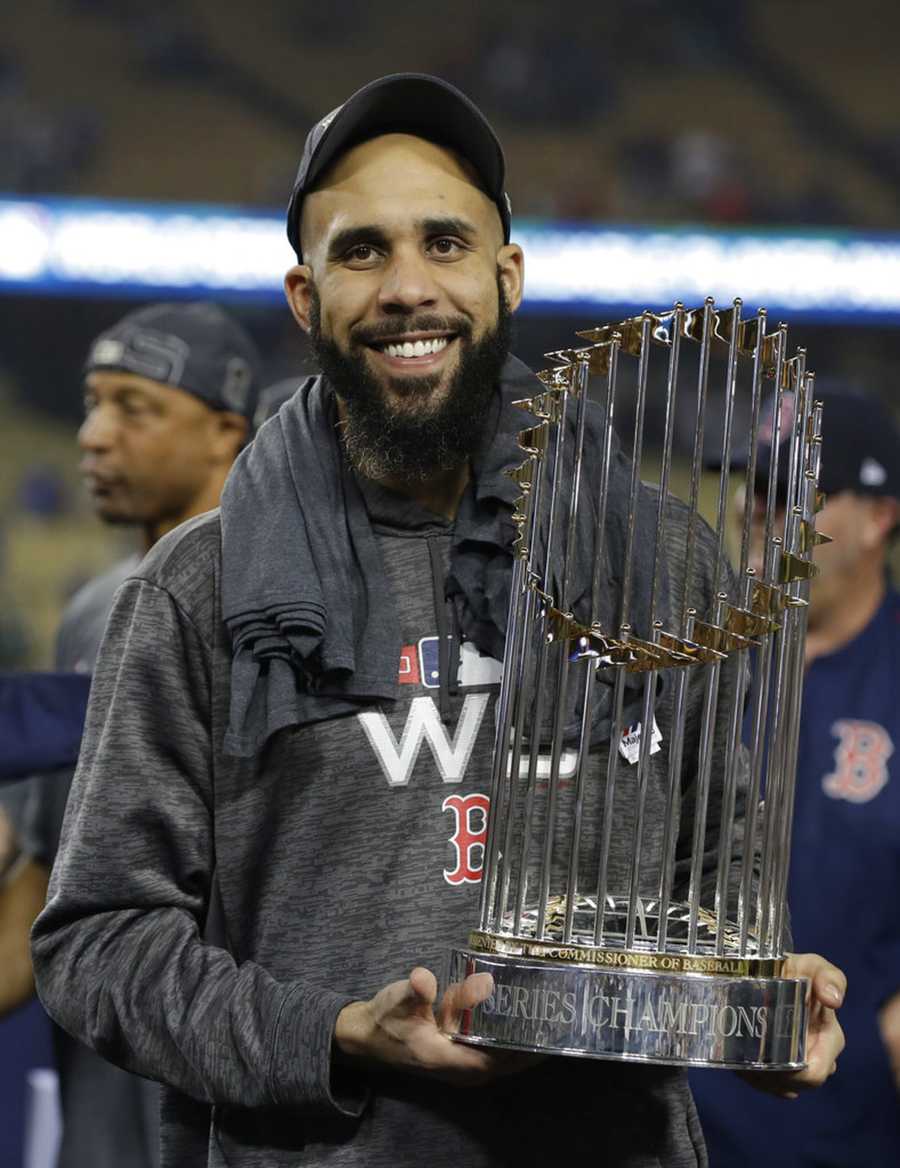By Jeff Lombardi Jr.
In the year of the home run, it was a pair of pitchers that stole the show in 2019. One may point to the astonishing number of home runs being hit – 6,776 to be exact, yet it was two pitchers who shined brightest in 2019. And not just any pairing of pitchers, these two are teammates nonetheless in Justin Verlander and Gerrit Cole of the Houston Astros.
Under the assumption that Verlander and Cole finish 1-and-2 in the American League Cy Young Award voting, it will be just the fifth time in MLB history that a pair of teammates accomplished such a feat. The others: Randy Johnson and Curt Schilling in 2001, and again in 2002, Mike Marshall and Andy Messersmith in 1974 and the duo of Don Newcombe and Sal Maglie in 1956.
Teammates to finish 1 -2 in Cy Young Award
MLB History
Randy Johnson Curt Schilling ARI 2002 NL
Randy Johnson Curt Schilling ARI 2001 NL
Mike Marshall Andy Messersmith LAD 1974 NL
Don Newcombe *Sal Maglie BRK 1956 MLB
*Maglie was traded from CLE to BRK mid-season
However, the Verlander/Cole combination are like no other. There would not be much of argument in favor of Curt Schilling deserving the award over Randy Johnson in either of those seasons. The same could be said for Messersmith over Marshall, at least according to the voters. Marshall made all 106 of his appearances as a reliever, earning 17 of 22 first place votes. After all, Johnson received 98% (30/32) of the vote in 2001, and actually bested himself by being a unanimous selection in 2002 – no voter fatigue there. The Verlander/Cole Cy Young balloting is shaping up to be one for the ages. There truly is not one right answer or a clear favorite in the jockeying for the American League’s top pitcher in 2019.
2019 season comparison
Justin Verlander – Gerrit Cole
21-6 W-L 20-5
223 IP 212.1
2.58 ERA 2.50
12.1 K/9 13.8
.172 BAA .186
0.80 WHIP 0.90
Johnson and Schilling will be the most common tandem thrown around when comparing the 2019 model of Verlander and Cole. Especially given that Verlander notched his 300th strikeout of the season in his final start of the 2019 campaign, joining Cole set the new franchise mark with 326. Johnson (334) and Schilling (316) are the only other teammates in MLB history to reach the 300-strikeout mark in the same season (2002). Additionally, with Verlander and Cole finishing with 21 and 20 wins respectively it is the first time a team had two 20-game winners since 2002 when Randy Johnson and Curt Schilling did it for the Diamondbacks, as did Pedro Martinez and Derek Lowe of the Red Sox.
While this argument isn’t to slight the spectacular seasons Johnson/Schilling. In fact, the dominance they had over two consecutive seasons is exactly why their names are brought up in this discussion. With that being said, the margin between two teammates who are bound to finish 1-2 in the Cy Young balloting has never been as good as what has unfolded in 2019.
2001 season comparison 2002 season comparison
Johnson – Schilling Johnson – Schilling
21-6 W-L 22-6 24-5 W-L 23-7
249.2 IP 256.2 260 IP 259.1
2.49 ERA 2.98 2.32 ERA 3.23
13.4 K/9 10.3 13.4 K/9 10.97
.203 BAA .245 .208 BAA .224
1.01 WHIP 1.08 1.03 WHIP 0.97
Take this into consideration; in the expansion era (since 1961) there have been 13 instances when a pair of teammates finished top two in their respective league in ERA. Since 2000 there have been only four: Kyle Hendricks and Jon Lester in 2016, Roger Clemens and Andy Pettitte in 2005, Pedro Martinez and Derek Lowe in 2002 and Johnson/Schilling in 2001, not 2002. Only in the case of Hendricks (2.13)/Lester (2.44) and Clemens (1.87)/Pettitte (2.39) would both pitchers finish with lower ERAs than Cole (2.50)/Verlander (2.58).
In the same span there have been five pairs of teammates to finish first and second in the MLB in strikeouts: Verlander and Max Scherzer in 2012, Kerry Wood and Mark Prior in 2003, Johnson and Schilling in 2001 and 2002, Nolan Ryan and Frank Tanana in 1976 and Don Drysdale and Sandy Koufax in 1962. By those standards, Verlander and Cole would rank third.
Most Combined K’s by teammates to finish 1-2 in MLB
Expansion Era (since 1961)
Johnson/Schilling 665 2001
Johnson/Schilling 650 2002
Verlander/Cole 626 2019
Ryan/Tanana 588 1976
Wood/Prior 511 2003
Verlander/Scherzer 470 2012
Drysdale/Koufax 448 1962
Now here’s the catch. There’s no denying how appealing strikeouts are. Especially in the era of the three true outcomes (K, BB, HR). It’s worth mentioning that 2019 marks the 11th straight season where the league-wide strikeout record has been broken. With Verlander and Cole both joining the 300 K club this season, there has been at least one pitcher to record 300+ strikeouts in four of the last five seasons, including each of the last three. (Kershaw 301, 2015 – Sale 308, 2017 – Scherzer 300, 2018 – Cole 316, 2019/Verlander 300, 2019).
The ultimate job of a pitcher is run prevention – to give your team the best chance of winning by limiting the opposition. This is done by limiting the amount of base runners allowed via walk or hit, measured by a pitcher’s WHIP. Since 1961, there has been one pair of teammates to finish 1-2 in MLB in WHIP: Don Sutton (0.99) and Jerry Reuss (1.02) in 1980. Verlander’s WHIP of 0.80 and Cole’s 0.90 best both of those figures. To put this into further historical significance, Verlander’s WHIP ranks third among pitchers with at least 200 innings pitched in a single-season in the modern era.
Lowest WHIP in a single-season
Modern Era (since 1900) *Min. 200 IP
Pedro Martinez 0.74 2000
Walter Johnson 0.78 1913
Justin Verlander 0.80 2019
Addie Joss 0.81 1908
Greg Maddux 0.81 1995
Verlander has also limited his opponents’ batting average at a historic rate. His .172 batting average against ranks fourth in MLB history among pitchers who have thrown 200 innings in a single-season.
Lowest BAA
Single Season – MLB History *Min. 200 IP
Pedro Martinez .167 2000
Luis Tiant .168 1968
Nolan Ryan .171 1972
Justin Verlander .172 2019
Max Scherzer .178 2017
For those who are still crazed by staggering strikeout totals, Houston’s duo stacks up quite well – and not just to Johnson/Schilling of 2001-02. Gerrit Cole’s staggering 13.8 strikeouts per nine innings is the highest figure in the modern era among pitchers who have thrown 200 innings in a single-season. Verlander sits at 12.7, good for second in the American League in 2019.
Highest K/9 in a single-season
Modern Era (since 1900) *Min. 200 IP
Gerrit Cole 13.8 2019
Randy Johnson 13.4 2001
Pedro Martinez 13.2 1999
Chris Sale 12.9 2017
Randy Johnson 12.6 2000
Cole and Verlander’s dominance has been shown through their raw strikeout numbers as well as their rate per nine innings pitched. Well how about their frequency per batter they face, which is essentially a batting average type calculation for the amount of strikeouts induced by a pitcher. Gerrit Cole’s K rate of 39.9% is also the highest in the modern era among pitchers who have thrown 200 innings in a single-season. And even old reliable, Justin Verlander cracks the list, ranking fifth in the modern era at 35.4%.
Highest K Rate
Single Season – MLB History
Gerrit Cole 39.9% 2019
Pedro Martinez 37.5% 1999
Randy Johnson 37.4% 2001
Chris Sale 36.2% 2017
Justin Verlander 35.4% 2019
*Min. 200 IP
And who doesn’t like a good streak. Joe DiMaggio is revered for his 56 game-hitting streak in 1941, or baseball’s Iron Man Cal Ripken Jr. who played in 2,632 consecutive games from 1982-1998. And for the sake of the long ball extraordinaires among us, let’s not forget about Dale Long, Don Mattingly and Ken Griffey Jr. who each homered in eight consecutive games.
In the Astros season finale, Gerrit Cole became the first pitcher in baseball history to strikeout 10 or more batters for the ninth consecutive game. And if that wasn’t good enough, Cole extended his consecutive starts without a loss streak to 22 – matching Roger Clemens’ streak in 1998 for the second-longest of it’s kind in baseball history. Cole pitched to a perfect 16-0 mark with a 1.78 ERA, while Houston went 20-2 over that span of starts.
Most Consecutive Games with 10+ K Most Consecutive Starts without a loss
MLB History MLB History – Single Season
Gerrit Cole 9 2019 Dave McNally 26 1969
Chris Sale 8 2017 Gerrit Cole 22 2019
Chris Sale 8 2015 Roger Clemens 22 1998
Pedro Martinez 8 1999 Lefty Grove 21 1931
*Cole’s streak is active Mike Fiers 21 2019
Although this is foreseen to be a two horse race, there have been two such occasions where a pitcher has won the Cy Young Award without receiving the most first place votes. In 2009, Tim Lincecum won his second consecutive award in the NL, while Adam Wainwright edged him in first place votes 12-11. That voting was actually a three horse race as Wainwright finished third in the voting. The runner up? Wainwright’s St. Louis Cardinals teammate, Chris Carpenter.
Lincecum lead the senior circuit in strikeouts, while Carpenter owned a league best 2.24 ERA and Wainwright paced the league in wins and innings pitched. The other occurrence was in 1998, also in the National League, when Tom Glavine won the award over Trevor Hoffman. Glavine received 11 first place votes, while Hoffman received 13.
2009 NL Cy Young Voting
Stat Lincecum Carpenter Wainwright
W-L 15-7 17-4 19-8
IP 225.1 192.2 233
ERA 2.48 2.24 2.63
K/9 10.4 6.7 8.2
WHIP 1.05 1.01 1.21
1st place votes 11 (63%) 9 (59%) 12 (56%)
There is no right answer to who should win the 2019 AL Cy Young Award. Justin Verlander has one Cy Young Award under his belt in his MVP season of 2011. However, he has three second place finishes in the award (2012 – Price, 2016 – Porcello and 2018 – Snell). Obviously it is not to the extent of another Hall of Fame fire baller with Houston ties, Nolan Ryan, who went his entire 27 year career without winning the award (six top-5 finishes).
JV’s situation has somewhat of a Trout like feel to it. Trout, undoubtedly the best player of his generation has two AL MVPs (2014, 2016) but has also fallen runner-up on four occasions (2012 – Cabrera, 2013 –Cabrera, 2015 – Donaldson and 2018 – Betts). Verlander, undoubtedly one of the best in all of baseball, if not the best American League pitcher of his generation could be looking at his fourth second place effort. If Verlander comes out on top, he would set the MLB record for most seasons (7) between Cy Young Awards.
Justin Verlander Season Notes
- Led MLB pitchers in WHIP (0.80), Opp. AVG (.172), W (21), IP (223). Ranked T-1st in the AL in Quality Starts (26) and 2ndin ERA (2.58) and Opp. OPS (.579).
- Won 20 games for the second time in his career (24 wins in 2011).
- His 0.80 WHIP was the third lowest by a starting pitcher in the Modern Era (since 1900) behind only Pedro Martinez (0.74 in 2000) and Walter Johnson (0.78 in 1913).
- Started the All-Star game for the American League (2nd of his career, 2012).
- Became the American League’s oldest 20 game winner since Mike Mussina won 20 games at 39 years-old in 2008.
- Career-high 300 strikeouts (previous high: 290 in 2018).
- Threw the 3rdno-hitter of his career on Sept. 1 at TOR – 6th pitcher with 3+ no-hitters.
- Became the 18thpitcher in MLB history to strikeout 3,000 batters. Doing so in the 4th fewest innings (2,979.2) and fifth (453) in terms of games.
- Became the second pitcher in MLB history to reach 300 K for a season and 3,000 K for a career – in the same season, joining Randy Johnson (who else) who did so on 9/10/2000 at FLA
- Marked the 12th season of his career with 200 innings pitched (fourth consecutive).
- Named the 2019 Astros Pitcher of the Year by the Houston Chapter of the Baseball Writers Association of America.
Gerrit Cole Season Notes
- Led MLB pitchers in K (326) and ranked 2nd in W (20), Opp. AVG (.186). Led the AL in ERA (2.50), Opp. OPS (.579) and T-1 in Quality Starts (26)
- Recorded the highest strikeout rate (39.9%) and K/9 (13.8) in MLB history – previous record for K/9 was held by Randy Johnson (13.41 in 2001).
- Set the Astros franchise record for strikeouts (316)
- Did not suffer a loss over his final 22 starts of the season, the second longest single-season streak of its kind in baseball history: 16-0, 1.78 ERA, 146.2 IP, 226 K, .171 BAA over that span.
- Recorded 10+ strikeouts in each of his final 9 starts, setting a MLB record.
- Finished the season with a HOU franchise record 16-game winning streak – the longest in a single-season since Roger Clemens in 2001.
- His 326 K’s are the most in the MLB since Randy Johnson had 334 in 2002 (ARI). It is the most by an AL pitcher since Nolan Ryan had 341 in 1977 (CAL).
- Became the fourth pitcher in MLB history to have 21 double-digit strikeout games (Sandy Koufax, Nolan Ryan and Randy Johnson 3x).
- Set the single-season MLB record by recording seven starts with 10+ K and no walks. The previous record of six was held by Schilling (2002), Johnson (2004) and Clayton Kershaw (2016).
- Was named the AL Pitcher of the Month in June, July and September.
One more thing…
Verlander/Cole RJ/CS 2001 RJ/CS 2002
ERA 2.54 2.74 2.77
K/9 12.9 11.8 11.3
WHIP 0.85 1.04 1.00

